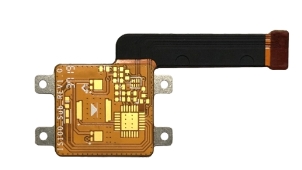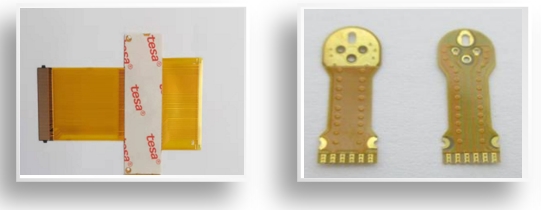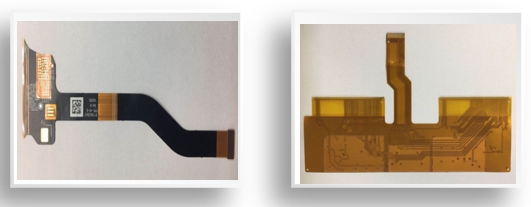

Double Sides Flexible Circuits & Circuitries
Double Sided Flexible Circuit Stack Up / Structure
As double sided FPC is the most popular type of flexible circuit, so there’re various combination of different material. There’re five basic layers, from top to bottom (didn’t list the adhesive between):
- Coverlay (top)
- Copper trace (top)
- Polyimide: between two copper trace
- Copper trace (bottom)
- Coverlay (bottom)
Here is the most popular stack up /layer up of double layer flexible circuits:
Adhesiveless laminate also available and in fact, it’s very popular, as engineer want thinner thickness, bigger bend radius, chemical and high temperature, low outgassing, dimensional stability, more flexibility, longer life cycles, and impedance control and so on.
Double Sides Flex Printed Circuit Board Samples
Here are pictures of double sided flexible circuit produced by us.
 |  |
Contact to see more photos of double-sided flexible printed circuit. manufactured by us in China, to see how it can be used in various application.
Capability of Double Side Flexible Circuit:
Copper thickness: 1/3OZ, 1/2OZ, 1OZ, 2OZ, 3OZ, 4OZ
Polymide thickness (in base material): 1/2mil, 1mil, 2mil, 3mil, 4mil
Board thickness: 0.10mm ~ 0.44mm
Maximum Dimension: 220*1,500mm
Min PTH: 0.10mm
Min LW/LS: 2mil/2mil (0.5OZ)
Impedance control: Most popular values are 50 ohm, 90 ohm, 100 ohm, other values also available
Manufacturing Process of Double-Sided Flex Circuit
Here is a simple manufacturing process of double-sided flex circuits, welcome to visit Best Technology factory in China, to see the real manufacturing process of flex circuit, then you will know better how to make 2 layers flex circuit, to see how We transfer your circuit board layout into real flex circuit.

Please contact us today for more information or any inquiry for double-sided flexible circuit board.
